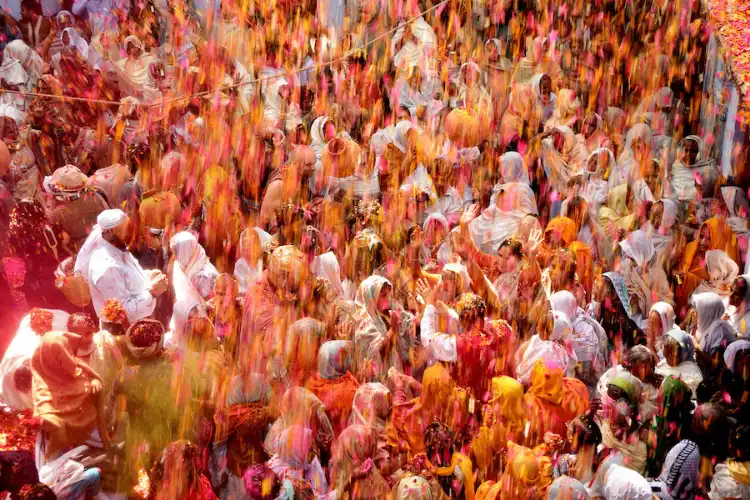
New Delhi
The festival of Holi generally associated with colours is celebrated in different ways in different regions of India. From the lathmar Holi of Nandgoan, Uttar Pradesh, where womenfolk beat the men with sticks as the latter scurry around for cover, to the song and dance sessions in Kumaon, the spring festival has myriad shades and hues.
Holi is celebrated as a festival of joy, Nature’s abundance, and harmony and is one of the few community festivals of the Hindus. Over centuries, it has become the festival of all Indians. Here are some of the interesting Holi celebrations:
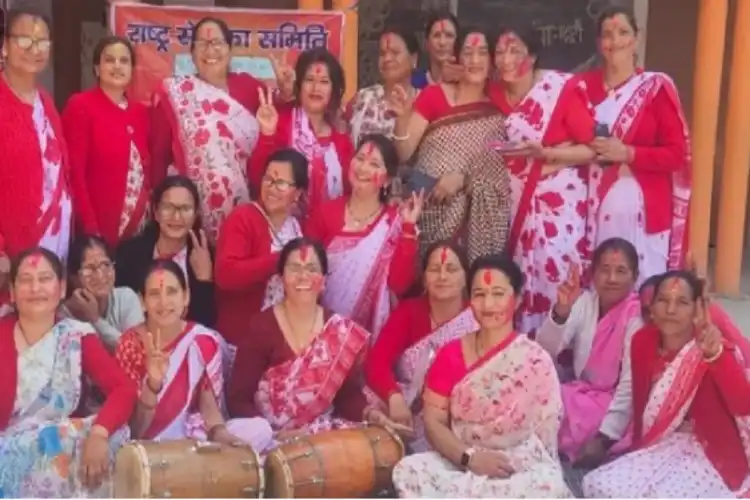
Women's singing group from Kumaon
Kumaon: The hills of Uttrakhand turn into a long festival of song and music around Holi. Called Nagar Holi or Baitki Holi, the festival is traditionally associated with classical music, which is also close to folk songs. The tradition of singing Holi in Kumaon started during the time of Raja Kalyan Chand in the 16th century. The regular singing of Holi in Kumaon had started in the year 1850. Since 1870, it’s been celebrated as an annual festival in Kumaon.Holi of Kumaon is associated with songs sung by groups of men and women symbolizing collective expression of the rural society.
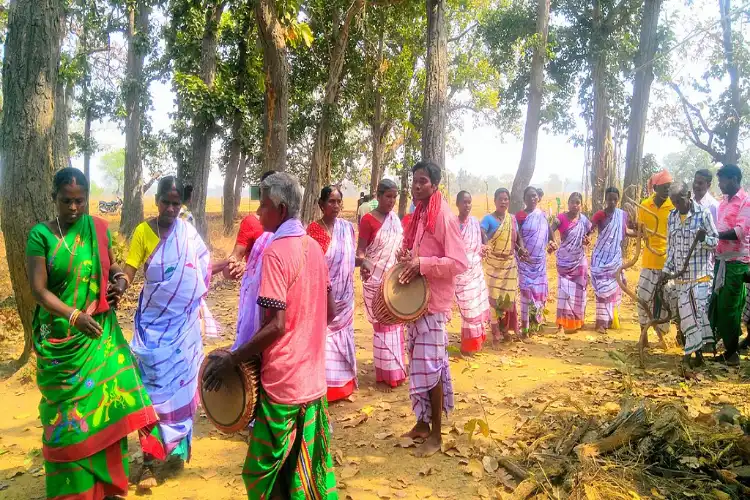
The Santhal Tribes men and women celebrating Baaha Parv or Holi
Ranchi: in the Santhal tribal society of Jharkhand, Holi is not played with colour but with water and flowers. The festival is called Baaha and it begins a fortnight before the actual Holi Day. People refrain from using colours for the reason and throwing colours on others has a different connotation for them. If a young man puts color on a Santhal girl, it means he loves her; he either marries her or pays a heavy fine.
Baaha, meaning the festival of flowers, begins before Holi. In each village special events of nature, worship are held. Santhals also worship arrows and bows and dance to the beat of drums and pour water on each other. Even water pouring has an etiquette; it can’t be done to a stranger, especially between two sexes. If a boy pours water on a woman he would have to marry her. In case the girl’s family rejects him then he can be punished by making his transfer his property to the girl.
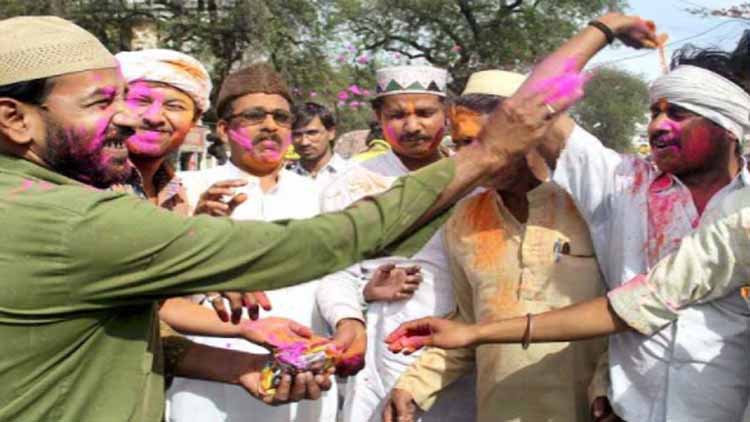
The inclusive Holi of the city of Nawabs, Lucknow
In Lucknow, the traditional Holi fair in old Lucknow is one of the traditions of the city. The fair was started by Nawab Ghaziuddin Haider near the Koneshwar temple. His motive was to unite people through common festivities. It’s interesting to note that even today there is no authority or an association in charge of the fair but it happens impromptu on the day. Nawab Wajid Ali Shah (Akhtar) is believed to celebrate Holi with gay abandon.
There is an anecdote about his fondness for the festival. It seems in one particular year, Muharram and Holi fell on the same day. Due to this, the Hindus decided not to celebrate Holi. However, Muslims who consider Holi their festival reached the court of Nawab to find a way out. Nawab Wajid Ali Shah decided that different times should be fixed for playing Holi and mourning on the same day. As a result, Muslims played Holi with Hindus first and then Hindus joined in Azadari (mourning) with Muslims.
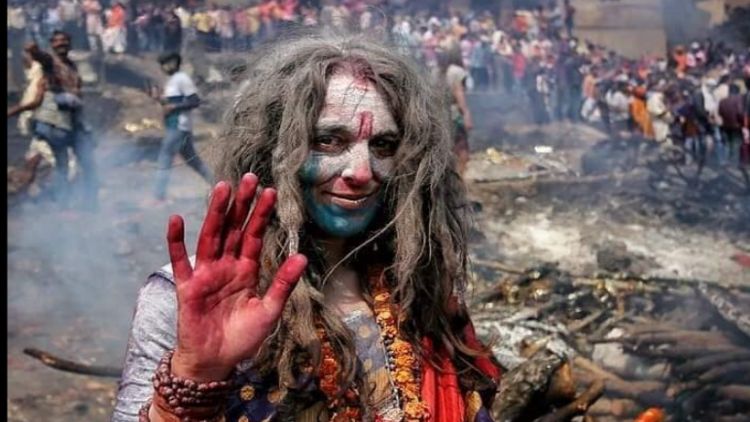
A sadhu celebrating holi at crematorium in Benaras
Benaras:In the ancient city of Benaras or Kashi, Holi is celebrated as a festival to commemorate Lord Shiva taking his bride Parvati home after her brief stay at her parental; home post their wedding. For a specific reason, they play Holi with the ashes of the cremated bodies in the crematorium. A procession in which men dressed as Lord Shiva and Parvati moves through the streets close to Kashi Vishwanath temple in a procession. They play Holi with Abhir-Gulal (red colour) to the extent that the lanes are turned into a thick red carpet. Since Shiva lives in the wilderness of the Himalayas had ghosts as his followers and they are not permitted to enter the populated area, a way out has been devised. The procession ends at the crematorium where everyone plays Holi with the ashes of the burnt pyres.
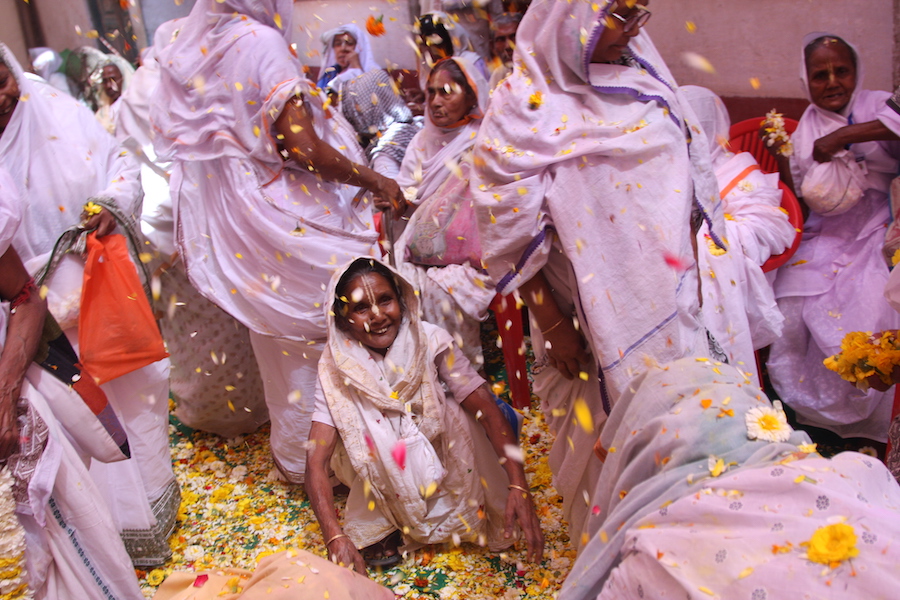
Women who have lost their husband to death breaking taboos by playing Holi in Vrindavan
Vrindavan: In recent years, NGO Sulabh international has been using Holi to end the taboo associated with widowhood. The organization that has been taking care of some 2,000 destitute widows from different parts of the world holds a grand Holi celebration for them. In many societies losing a husband is seen as a misfortunate of the wife and hence she is treated as cursed and at times thrown out of the household. For this reason, widows would come to Vrindavan and Banaras. On Holi, all of them play with colors and flowers defying the belief that widows are not entitled to any celebration.
